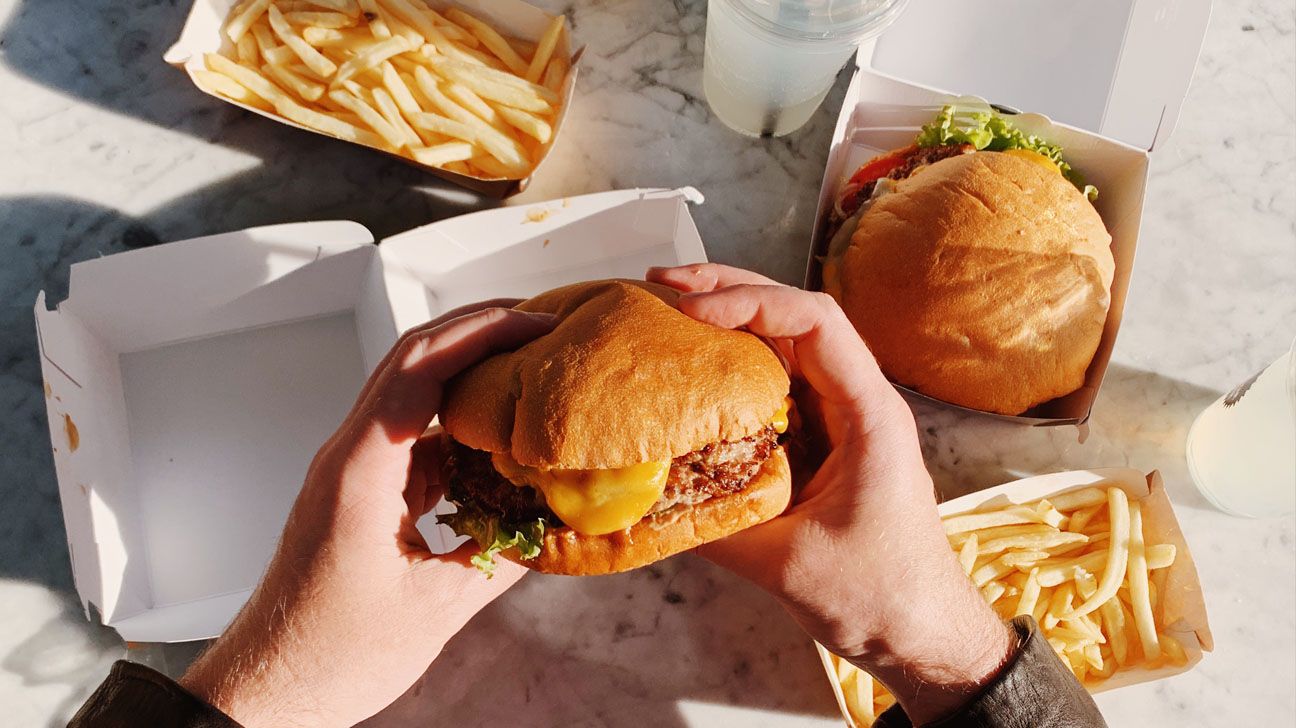Ultra-processed Foods Tied To More Than 124,000 Preventable Deaths In U.s.

A global study linked thousands of preventable deaths to ultra-processed food consumption. Alexander Spatari/Getty Images
- Ultra-processed foods could be driving an increase in preventable deaths, a global study reports.
- For every 10% increase in ultra-processed food consumption in total daily energy intake, the risk of all-cause mortality rose by 2.7%.
- Ultra-processed foods have been associated with 32 adverse physical and mental health outcomes.
Preventable deaths tied to ultra-processed food consumption increase significantly relative to their contribution to a person’s overall diet.
A global study published on April 28 in the American Journal of Preventive Medicine found that for each 10% increase in the contribution of ultra-processed foods (UPFs) to total energy intake, the risk of mortality from all causes rises by 2.7%.
In the United States alone, that’s more than 124,000 preventable deaths each year.
“UPFs affect health beyond the individual impact of high content of critical nutrients (sodium, trans fats, and sugar) because of the changes in the foods during industrial processing and the use of artificial ingredients, including colorants, artificial flavors and sweeteners, emulsifiers, and many other additives and processing aids, so assessing deaths from all-causes associated with UPF consumption allows an overall estimate of the effect of industrial food processing on health,” Eduardo Augusto Fernandes Nilson, DSc, lead investigator of the study and a researcher at the Oswaldo Cruz Foundation (Fiocruz) in Brazil said in a press statement.
Thousands of deaths linked to UPFs
As part of the study, Nilson and colleagues analyzed data from nationally representative dietary surveys along with mortality data from eight countries.
The countries included were the United States, the United Kingdom, Australia, Brazil, Canada, Chile, Colombia, and Mexico.
The years studied varied by country, ranging from 2010 to 2018. The average contribution of ultra-processed foods to the total energy intake also varied among countries.
The lowest consumption of ultra-processed foods was in Colombia (2015) and Brazil (2017–2018), where less than 20% of total energy intake was made up of ultra-processed foods.
In Chile (2010) and Mexico (2016), the intake increased to 20–30% of total energy intake. In Australia (2011–2012) and Canada (2016), the ratio of ultra-processed food intake increased significantly, with UPFs comprising 37.5% of daily energy intake in Australia and 43.7% in Canada.
In the United States (2017–2018) and the United Kingdom (2018–2019), the contribution of UPFs to total energy intake exceeded 50%. These nations had the highest number of premature deaths associated with UPFs, with nearly 18,000 in the U.K. and more than 124,000 in the United States.
Christopher Gardner, PhD, a nutrition scientist and professor of medicine at Stanford University, said the findings are an important addition to the research into ultra-processed foods. Gardner wasn’t involved in the study.
“The authors showed that regardless of the general consumption levels, there were consistently higher mortality levels among the subset of the population within each of those countries who consumed the most vs. the least UPF. In other words, even in a country where only 15% of the food being sold was UPF, those consuming the most vs. the least had detectably different rates of mortality,” he told Healthline.
“It would/should be easier to see that difference in a country like the U.S. or U.K. where the general consumption rate is much higher. Helpful to note that they also found it across the range of consumption levels in different countries. That is an interesting and important addition the field of knowledge about UPF. They should get credit for adding that to our knowledge base.”
Multiple physical, mental health impacts
Whilst there is no universally accepted definition of ultra-processed foods, the term is typically used to describe foods that are ready to eat or heat and are made in industrial settings, using little or no whole foods.
Ultra-processed foods are often considered convenient, highly palatable, and contain ingredients to make them more appealing. These may include coloring, emulsifiers, thickeners, flavoring, bulking agents, antifoaming agents, and sweeteners.
In many high income countries, ultra-processed foods already account for more than half of the average daily energy intake.
A 2024 review involving nearly 9.8 million participants concluded that a diet of ultra-processed foods is associated with 32 adverse physical and mental health problems, including:
- depression
- obesity
- cardiovascular disease
- some types of cancer
- diabetes
“It is concerning that, while in high-income countries UPF consumption is already high but relatively stable for over a decade, in low- and middle-income countries the consumption has continuously increased, meaning that while the attributable burden in high-income countries is currently higher, it is growing in the other countries,” Nilson noted in a press statement.
“This shows that policies that disincentivize the consumption of UPFs are urgently needed globally, promoting traditional dietary patterns based on local fresh and minimally processed foods,” he continued.
High in calories, low in nutrients
Dana Hunnes, a senior dietitian and assistant professor at the UCLA Fielding School of Public Health, said the findings are an important reminder of the benefits of reducing consumption of ultra-processed foods. Hunnes wasn’t involved in the new study.
“The consumption of UPFs contribute quite significantly to an increased risk of death (and disease) and that we should all work harder (and encourage greater regulation) to reduce the consumption of UPFs both in our own lives and in the food systems as well,” she told Healthline.
“(UPFs) are high in calories, sugar, salt, fat, but low in nutrients. They are stripped of all their naturally occurring health properties. All fiber has essentially been removed, vitamins and minerals found naturally (ie. in the husk of a grain) have been removed, and in their place are chemicals and adulterated “foods” that bare no resemblance to their natural counterpart. By adding calories to the diet without concurrent vitamins, minerals, fiber, and water, we are setting ourselves up for fast digestion/absorption, fat-deposition, insulin resistance, and the chronic diseases associated with all these problems,” Hunnes explained.
Despite this, more than 73% of the food supply in the United States is made up of ultra-processed foods.
For this reason, experts say Americans continue to choose UPFs along with other factors, such as convenience.
“Convenience is a large predictor of food choices. Due to the availability of fast food and fast-food choices in the supermarket as compared to other countries that prepare more food at home, the US may choose these foods more simply by having increased access to them,” Kanwar Kelley, MD, JD, board certified otolaryngologist (ENT) and co-founder and CEO of Side Health told Healthline. Kelley wasn’t involved in the study.
“Food labeling can also be confusing; a food will not be advertised as ‘ultra processed,’ but instead tries to focus on the positive aspects of the food, such as how much of a particular vitamin it has. This may lead to some confusion,” Kelley said.
A global public health issue
The study authors say their findings prove that mortality attributed to ultra-processed food intake is significant and that addressing the rate of UPF consumption should be a global health priority.
But experts note that changing dietary habits on an individual level can be complicated.
“My perception is that most people are aware of the dangers of UPFs, but choose to ignore this,” Mir Ali, MD, board certified general surgeon, bariatric surgeon, and medical director of MemorialCare Surgical Weight Loss Center at Orange Coast Medical Center in Fountain Valley, CA, told Healthline. Ali wasn’t involved in the study.
“Although education at an early age may help people make healthier food choices, most people do not look that critically at their diet and are more apt to choose food based on taste and convenience,” Ali said.
“Whole grains, fresh fruits, vegetables, lean proteins, nuts and dairy are healthier. In general fruits as an alternative to sweets like cookies and ice cream is better. Most people are aware of the dangers of UPFs, though switching to healthier alternatives is very difficult and can be cost prohibitive,” Ali concluded.


